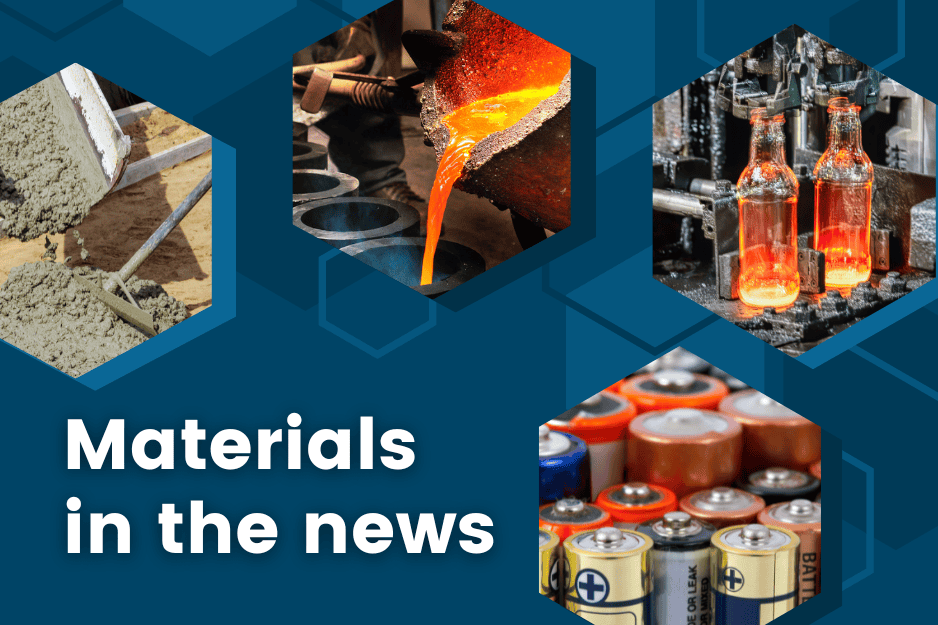
[Image above] Credit: ACerS
NANOMATERIALS
Voronoi-inspired design unlocks innovative nanocomposite properties
Drexel University researchers developed a novel vitrimer and MXene nanocomposite that is strong, self-repairing, and highly conductive despite a low level of nanomaterial content. This combination of properties stems from the material’s morphological design, in which MXene is embedded in the nanocomposite in a Voronoi style pattern.
2D semiconductor materials venture into space
Tsinghua University researchers used 2D transition metal dichalcogenides, specifically WSe₂ and Nb-doped WSe₂, to fabricate field-effect transistors. The transistors maintained their structural integrity and exhibited stable switching characteristics when tested before and after space flight.
ENERGY
Researchers advance lithium-ion battery technology with hybrid anode material
Dongguk University researchers developed a hybrid anode material that significantly boosts lithium-ion battery performance. The anode is a combination of graphene oxide and nickel-iron oxides to achieve high conductivity along with fast charging.
ENVIRONMENT
Sunlight and seawater lead to low-cost green hydrogen and clean water
Researchers led by Cornell University developed a hybrid solar distillation-water electrolysis device that can produce 200 milliliters of green hydrogen per hour with 12.6% energy efficiency directly from seawater under natural sunlight. A byproduct of the process is potable water.
Concrete in road tunnels decomposes unexpectedly fast
When seawater penetrates concrete in road tunnels, a biofilm forms that breaks down the concrete. Researchers led by Chalmers University of Technology revealed the mechanisms behind the degradation and its rapid progression.
MANUFACTURING
New 3D printing strategy reduces cracking in turbine blades
Chalmers University of Technology researchers developed an improved additive manufacturing method that reduces cracking and residual stress in metal components exposed to extreme heat and pressure.
New, nontoxic synthesis method for MXenes
TU Wien researchers found that well-dosed pulses of current cause small hydrogen bubbles to form on MAX phase materials, cleaning and reactivating the surface. This process allows the electrochemical reaction to be sustained for longer periods of time and a large quantity of MXenes to be produced.
OTHER STORIES
How mismatched geometries can enhance material strength and toughness
Models developed at the University of Michigan show how mismatched geometries can lead to fascinating complexity and enhance material properties like strength and toughness.
Quantum fractal patterns visualized
Princeton University researchers measured the energies of electrons in twisted bilayer graphene and found them to follow a fractal pattern.
Scientists observe exotic quantum phase once thought impossible
Rice University researchers reported the first direct observation of a surprising quantum phenomenon predicted over half a century ago. Known as a superradiant phase transition, the phenomenon occurs when two groups of quantum particles begin to fluctuate in a coordinated, collective way without any external trigger, forming a new state of matter.
Researchers develop flexible carbon nanotube thermoelectric generator
Researchers at the Korea Research Institute of Chemical Technology developed a flexible thermoelectric generator that maximizes thermoelectric performance by combining carbon nanotubes with bismuth, antimony, and telluride in a porous foam form.
Author
Lisa McDonald
CTT Categories
- Weekly Column: “Other materials”
Related Posts
Other materials stories that may be of interest for December 17, 2025
December 17, 2025
Other materials stories that may be of interest for December 10, 2025
December 10, 2025
Other materials stories that may be of interest for December 3, 2025
December 3, 2025